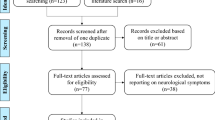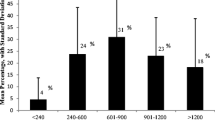Abstract
Neurological abnormalities in phenylketonuria were described before dietary treatment became possible. These included tremor, clumsiness, epilepsy, spastic paraparesis and occasionally extrapyramidal features. Neurological deterioration after childhood was recognised. Patients with neurological deterioration described recently have been late diagnosed or intellectually impaired or both. No early diagnosed patient who was well treated and of good intellectual outcome has yet shown neurological deterioration after stopping diet but it may happen.
Conclusion The fascinating links between pathology, magnetic resonance imaging appearances, magnetic resonance spectroscopy results and clinical features are not yet clearly understood. Patients must understand the possible risks of stopping diet and make their choice. All patients need help, support and follow-up regardless of the choices they make over continuing diet.
Similar content being viewed by others
Author information
Authors and Affiliations
Rights and permissions
About this article
Cite this article
Brenton, D., Pietz, J. Adult care in phenylketonuria and hyperphenylalaninaemia: the relevance of neurological abnormalities. Eur J Pediatr 159 (Suppl 2), S114–S120 (2000). https://doi.org/10.1007/PL00014373
Issue Date:
DOI: https://doi.org/10.1007/PL00014373




